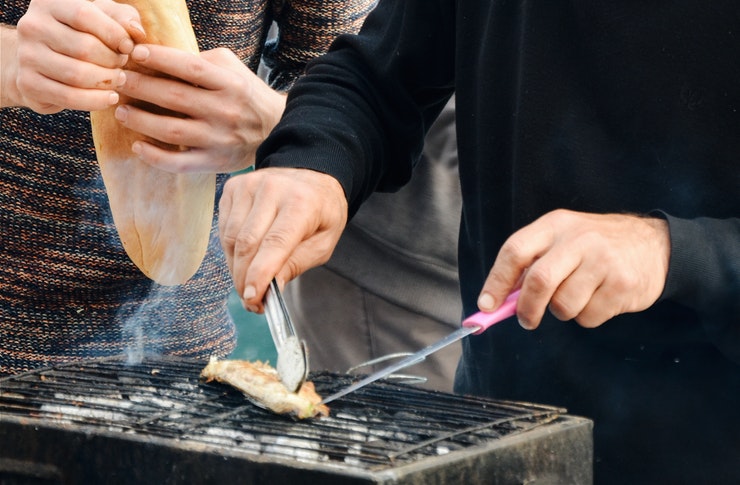Smoke and Spice: The Art of Barbacoa
Sizzling, smoky, and steeped in tradition, barbacoa is a culinary treasure that's captivating taste buds worldwide. This ancient cooking method, originating in the Caribbean, has evolved into a mouthwatering delicacy that's equal parts technique and cultural heritage. Let's dive into the world of barbacoa and discover why it's becoming a global sensation.

As barbacoa migrated, it adapted to local ingredients and customs. In Mexico, it became associated with lamb or goat, while in Texas, beef became the protein of choice. The cooking process, however, remained true to its roots – slow, patient, and deeply flavorful. Today, barbacoa represents a fusion of ancient wisdom and modern culinary innovation, appealing to food enthusiasts seeking authentic, time-honored flavors.
The Science of Slow-Cooking
At its core, barbacoa is a masterclass in the science of slow-cooking. The extended cooking time, often 8-12 hours, allows for the breakdown of tough collagen in the meat, resulting in incredibly tender, fall-apart texture. The low, consistent heat also enables the fat to render slowly, basting the meat from within and creating a luscious mouthfeel.
The use of aromatic herbs and spices in barbacoa isn’t just for flavor – it’s part of the preservation process. Many traditional herbs used in barbacoa, such as bay leaves and oregano, have natural antimicrobial properties. Combined with the smoking process, these ingredients help extend the shelf life of the meat, a crucial factor in its historical importance.
Modern Twists on Tradition
While traditional barbacoa holds a special place in culinary hearts, innovative chefs are putting their spin on this classic technique. Some are experimenting with non-traditional proteins like duck or even plant-based alternatives, pushing the boundaries of what barbacoa can be. Others are incorporating global flavors, fusing barbacoa with ingredients from Asian or Mediterranean cuisines.
One exciting trend is the use of barbacoa in fusion dishes. Imagine barbacoa-stuffed dumplings or barbacoa tacos with kimchi – these creative combinations are introducing barbacoa to new audiences and expanding its culinary possibilities. Even in fine dining, chefs are deconstructing barbacoa, presenting its elements in artistic, avant-garde presentations that honor its humble origins while elevating it to new gastronomic heights.
The Perfect Barbacoa: Tips and Techniques
Creating the perfect barbacoa at home might seem daunting, but with the right techniques, it’s an achievable culinary adventure. The key lies in patience and attention to detail. Start with selecting the right cut of meat – tough, collagen-rich cuts like beef cheeks or lamb shoulder are ideal. Marinating the meat overnight in a blend of chilies, vinegar, and spices not only enhances flavor but also begins the tenderizing process.
When it comes to cooking, maintaining a low, consistent temperature is crucial. If you don’t have access to an underground pit, a slow cooker or Dutch oven can be excellent alternatives. Wrapping the meat in banana leaves not only adds flavor but also helps retain moisture during the long cooking process. Remember, barbacoa isn’t just about the meat – the resulting consommé, or broth, is a delicacy in itself, often served alongside the meat as a rich, flavorful soup.
Barbacoa: Beyond the Plate
Barbacoa’s significance extends far beyond its delicious taste. It’s a symbol of community and celebration in many cultures. In Mexico, barbacoa is often the centerpiece of weekend family gatherings or special occasions. The process of preparing barbacoa, from selecting the meat to tending the pit, is often a communal activity that brings people together.
Moreover, barbacoa represents a sustainable approach to cooking. The slow-cooking method allows for the use of tougher, often overlooked cuts of meat, reducing waste. The traditional pit-cooking technique is also energy-efficient, using minimal fuel for maximum flavor. As modern diners become more conscious of their food’s environmental impact, barbacoa’s time-tested, resourceful approach is finding new appreciation.
Useful Tips & Facts
• Barbacoa is best enjoyed fresh, but leftovers can be frozen for up to three months.
• The term “barbecue” is believed to be derived from “barbacoa.”
• In some regions, barbacoa is traditionally eaten for breakfast on weekend mornings.
• The pit used for cooking barbacoa is often lined with maguey or agave leaves for added flavor.
• Barbacoa is rich in protein and can be a good source of B vitamins and minerals like iron and zinc.
In conclusion, barbacoa is more than just a dish – it’s a testament to the enduring power of traditional cooking methods and the joy of slow food in our fast-paced world. Whether you’re savoring it at a local taqueria or attempting to recreate it at home, barbacoa offers a delicious journey into culinary history and innovation. As it continues to evolve and inspire chefs around the world, barbacoa remains a shining example of how ancient techniques can remain relevant and exciting in modern gastronomy.





